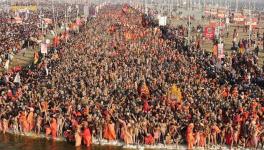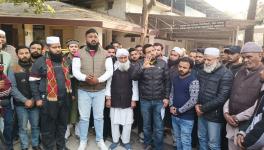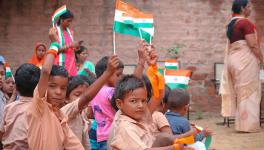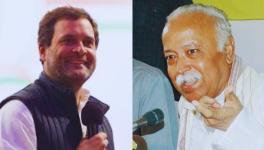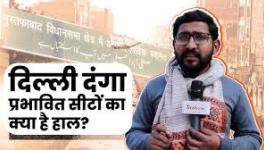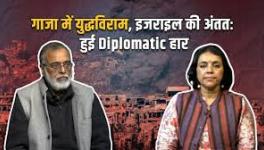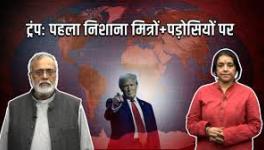Would Agniveer Ever Be Scrapped?

Representational Image.
Truth, as they say, has an uncanny ability of bursting out into the open, unannounced. This seems to have happened with the controversial Agniveer Scheme – the introduction of contract based employment in the military for four years – which even cost the ruling dispensation a few seats in the recent parliamentary elections.
What Prafulla Ketkar, who has been editor of 'Organiser' for the last eleven years, underlined in an event merits close attention in this connection. To a pointed question where he was asked '[w]hether India should prepare civilians for situations similar to those faced by Israel', he specifically mentioned that '[t]he Agniveer scheme was introduced for this purpose only. The scheme aims to train military-ready individuals who can be deployed during crises.’
It has been more than four days since Ketkar made this explosive statement, which obviously contradicts what the government wants us to believe. But there has been neither any denial of the statement from the highest level nor has he been reprimanded by top bosses of the Sangh Parivar for making such outrageous statements.
As an aside it may be recalled that the rationale provided by the government about this scheme veered around making the army younger and helping the government save money. A rough calculation was that with this scheme, the government will be able to say goodbye to 75 per cent of its regular force and it will be saved from paying them pension and other benefits. In financial terms it would be a ‘win-win’ situation for the government because as of now it has to pay around Rs.2.6 lakh crore from its defence budget of around Rs.5 lakh crore as part of payment and pension to the armed personnel.
This may be the first formal admission of sorts from within the Sangh Parivar that the real aim of Agniveer Scheme is to produce military-trained individuals who can be deployed when a crisis (obviously not at the borders but within the borders) like Israel erupts, although critics have already shared this concern earlier, arguing how it is a plan to militarise society on sectarian lines.
One can also recall what H D Kumarswamy, ex-Chief Minister of Karnataka and now a Cabinet Minister in the Modi dispensation, had then said about Agnipath Scheme:
“This is a plan to bring the army under RSS (Rashtriya Swayamsevak Sangh) control and use the 75% (out of the 10 lakh) who come out of the army and will be spread out around the country. Is the Agnipath scheme to create Agniveers a ploy to implement the same measures (agenda)?”
Commenting on what Prafulla Ketkar said, this is what Navaid Hamid, former President of the All India Muslim Majlis-e-Mushawarat had to say: “I have long argued that the primary purpose of introducing the Agniveer scheme is to militarize Hindu youth in preparation for future civil unrest in the country. The editor of the RSS mouthpiece has now confirmed this.”
Undoubtedly, what Prafulla Ketkar has inadvertently or deliberately revealed, is that the intransigence shown by the ruling dispensation on continuing this scheme is no knee-jerk reaction. It is a well thought out and conscious move which has its roots in the larger agenda of the Hindutva Supremacist ideology – which drives the ruling dispensation.
Remember, since its inception it has been keen to ‘arm the faithful’ in very many ways against the ‘infidels’ or against the ‘enemies of dharma’. It is now part of history that since the mid-1930s or early 1940s, the call for militarising Hindus slowly became increasingly popular. Right from the formation of Bhonsla Military School in 1937 to the regular training in arms among different Supremacist formations, one can see that a climax of sorts was reached during early 1940s when the Second World War erupted.
Savarkar - leader of Hindu Mahasabha - used this 'historic opportunity' to join hands with Muslim League etc. to form coalition governments in Punjab, Bengal and other border provinces and also led a campaign at the national level to mobilise Hindus to join the British war efforts with the key slogan 'Hinduise the Military, Militarise the Nation'.
A close look at the first decade of the present ruling dispensation makes it clear how there have been many occasions when this desire / plan / readiness to arm the people and militarise the society was exposed.
Does anyone still recall how Sangh Supremo Mohan Bhagwat, while visiting Muzaffarpur in 2018, had raised a big storm in political circles when he had openly declared that his people/activists have the ability to raise an "army", which can be deployed on the front within three days, and had raised questions about the ability of the security forces for quick operations?
Or, how in a controversial and much reviled decision, the Union government under Prime Minister Narendra Modi decided to hand over “67 per cent of Sainik Schools to the Sangh Parivar (and its allied organisations who are self-acclaimed majoritarian and unconstitutional bodies), BJP politicians and allies.
Coming back to Agniveer, it would be height of innocence if one thinks that Modi government and plethora of its advisers had not thought over the possibility that every year thousands of such youth – who have received arms training and have got arms licenses – enter the broader society as unemployed youth and what sort of ambience they would help generate or what sort of social anarchy they can help create. Perhaps they want to convey the impression that it desires such an army of unemployed youth in the society which would be cannon fodder to exclusivist ideology of Hindutva?
Whatever might be the case it portends a big danger to whatever remains of the secular fabric of India and signals a violent future for the Republic. It is an open secret that in societies, which have witnessed large-scale militarisation of the populace and where the so-called majority is not only armed but has even received training in its use, there, in conflict situations (veering around religious or communal grounds), the majority community is able to unleash tremendous miseries on the ‘minorities’ who are deprived of such opportunities.
Security expert and analyst Sushant Singh who had been associated with Centre for Policy Research, has written about the social effects of such militarisation and the grave impact of such arming of people on societal violence.
He writes about the ethnic cleansing undertaken in Yugoslavia – after its slow disintegration – or how Rwanda in Africa witnessed massive killings of minority Tutsi and some middle roaders Hutus at the hands of armed militia of Hutu tribe. According to rough estimates 5-6.25 lakh people were killed in the massacre in Rwanda between 7 April 1994 and 15 July 1994.
We ourselves – as well as the rest of the world – are aware about the violence at the time of Partition of Indian subcontinent. An estimated 10-20 lakh people of various communities were killed and more than 12 million people were forcibly displaced from their homes. Studies also underline that those areas of Punjab – on both sides of the border – witnessed more violence which were more armed. Remember people from Punjab use to join the British army in significant numbers and number of such retired military personnel was quite significant on both sides.
Looking at the fact that majoritarian violence is on ascendance in the Indian subcontinent, the minority communities are being targeted in very many ways and such violence has support of the people in power and the media also looks biased, it is of key importance that we remain vigilant.
Today, the situation is such that there are open calls of genocide of religious minorities in so called religious or other conferences but not only the executive keeps quiet and, barring exceptional cases, the role of the judiciary also leaves much to be desired.
In such an explosive situation it is easy to imagine what sort of social impact such unemployed youth – who have received training in the army for four years – can create in the society, youth who have license to bear arms.
This happens to be the thirtieth year of the Rwanda Genocide and all attempts should be made that such crimes against humanity are consigned to history forever. There is much to learn for us looking at the fact that it has what the author calls ‘[e]erie parallels in today’s India’.
In India, a beginning in this direction can be made when the Aginveer scheme is finally dumped.
Get the latest reports & analysis with people's perspective on Protests, movements & deep analytical videos, discussions of the current affairs in your Telegram app. Subscribe to NewsClick's Telegram channel & get Real-Time updates on stories, as they get published on our website.









